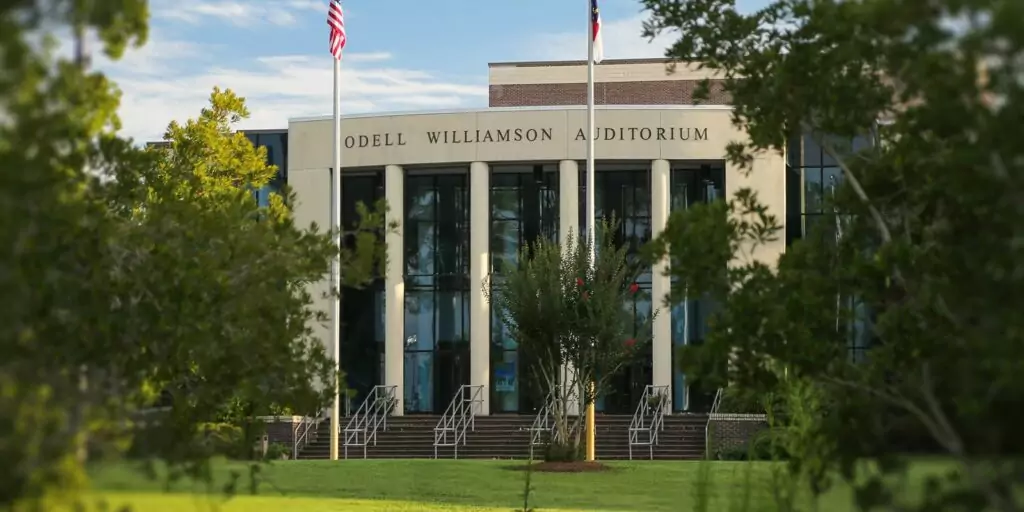Is college truly growing simpler, or are we simply becoming more savvy students? This topic, posed by a returning freshman on Reddit, opens the door to a Pandora’s box of intense opinions and unique experiences shared by students from many backgrounds. The academic environment appears to be changing beneath our feet, from the use of cheat sheets in trigonometry examinations to the very generous grade-boosting chances in history classes. Is this, however, a uniform tendency or just a few isolated events amid a sea of diverse educational experiences?

✅ AI Essay Writer ✅ AI Detector ✅ Plagchecker ✅ Paraphraser
✅ Summarizer ✅ Citation Generator
Key takeaways:
- College experiences, especially regarding academic rigor, can significantly vary between community colleges and universities, with some students noting more leniencies and others emphasizing consistent challenges.
- The move towards more accommodating assessment methods has its pros and cons.
- While technology enhances learning and accessibility, it also presents challenges in maintaining academic integrity.
- Changes in academic practices could influence the perceived value of degrees and raise questions about whether current educational models effectively prepare students for the practical applications of their knowledge in the workforce.
Returning Students’ Observations
The student, who took a break and then dove back into the college scene, noticed a few things that seemed a bit off compared to their first round in higher education. For starters, 40% of their English grade was based on just showing up and participating, trigonometry tests allowed for formula sheets, and the economics class was an entirely open book. Not to mention, the history class offered a sweet deal of extra credit that could potentially boost a final grade significantly. It’s like the rules of the game have changed, but why?
Colleges might be shifting gears in how they grade and assess students. One thought is that they’re trying to be more inclusive and considerate of different ways students learn and show their knowledge. Not everyone is a whiz when it comes to taking tests, right? Some students might shine in class discussions, while others might demonstrate their understanding better in practical applications or projects. By mixing things up a bit in terms of grading and assessments, colleges might be trying to make sure every student gets a fair shot at showing what they know in a way that works best for them. Plus, let’s be honest, a bit of extra credit has probably saved us all at one point or another! So, is this a thoughtful approach to helping students succeed, or is there more to the story?
Varied Experiences Across Institutions
The students are getting different vibes depending on where they’re studying. Some folks chimed in with their two cents, noting that their experiences in community colleges and universities were like night and day.
Community colleges, for some, seemed to be a bit more laid-back in their approach. One user even described their time at a community college as a “joke” compared to their university experience. On the other hand, universities, especially the big ones, were often painted as being a bit more rigid and challenging. But why is there such a stark contrast between these two types of institutions?

Well, it might boil down to what these places are trying to achieve and who they’re trying to serve. Community colleges often aim to be more accessible and accommodating, providing a learning environment that’s supportive and a bit more flexible. They cater to a wide range of students, including those who might be juggling other life responsibilities like work or family. So, things like open-book tests or extra credit opportunities might be a way to level the playing field and give everyone a shot at success.
| Community Colleges | Universities | |
| Admission Requirements | Typically have open admissions | Often have stricter admission requirements |
| Degree Programs | Primarily offer 2-year associate degrees | Offer bachelor’s, master’s, and doctoral degrees |
| Cost | Generally more affordable | Tend to be more expensive |
| Class Size | Often smaller class sizes | May have larger class sizes, especially in lower-level courses |
| Student Demographics | Diverse, including many non-traditional students | May have a larger population of traditional students (straight from high school) |
| Campus Life | Might have fewer on-campus living options and clubs | Often have robust campus life with various activities and housing options |
| Teaching Focus | Often more focused on practical and applied learning | May have a mix of practical and theoretical learning, with research opportunities |
| Transfer Opportunities | Often have transfer programs to 4-year institutions | May accept transfers but could have more rigorous transfer requirements |
| Faculty | Instructors may focus primarily on teaching | Faculty may balance teaching, research, and publishing |
| Academic Rigor | May offer more flexible and accommodating grading policies | Might adhere to more traditional and stringent grading and assessment methods |
| Accessibility | Often serve local or regional student populations | May attract students nationally or internationally |
| Specialized Programs | Might offer more vocational and technical programs | Often provide a wide range of majors and specialized programs |
Conversely, universities, especially those with a reputation to protect, might crank up the heat a bit more. They might stick to more traditional and stringent grading and assessment methods, pushing students to hit the books hard. But it’s not just about being tough for the sake of being tough. Universities might focus on diving deep into subjects and prepping students for specific careers or further studies.
So, while our returning student noticed a shift towards what seemed like an easier academic path, it’s clear from the chorus of voices in the comments that experiences can wildly differ depending on where you’re studying. It’s a fascinating peek into how different institutions shape their academic journeys, each with its rules, expectations, and student experiences.
The Shift in Academic Policies and Practices
Assessment Strategies
Let’s take a look at how colleges are changing the way they test and grade students. The original post mentioned open-book exams, grades for participation, and the golden ticket of extra credit opportunities. These aren’t just random changes. There’s a whole debate going on about how students should be assessed. On one hand, open-book exams and allowing cheat sheets can mimic real-life situations. After all, in most jobs, you’re not expected to memorize everything; you look things up. But on the flip side, does this approach take the challenge out of learning and make things a bit too easy? It’s like a seesaw trying to balance preparing students for real-world applications and maintaining a solid difficulty level in their studies. One of the students commented,
“My college understood the assignment so most of my classes do allow things like formula sheets or like a half page of notes because “in the real world you’re going to look it up anyways” but we have to be able to explain our answers in a TON of detail otherwise we get the question marked wrong even if the answer itself is correct.”
Technological Impact
Undoubtedly, technology has wedged its way into almost every aspect of our lives, including education. Online resources, digital textbooks, and even AI tutors have become a college experience. This techy inclusion can make learning more accessible and versatile, providing students with a wealth of information at their fingertips. One of the users shares their thoughts,
“The internet slowly began to lower the need for trips to the library or problem solving sessions with classmates, but eventually with the rise of sites like Chegg, it removed the need to struggle to get answers on assignments all together and undermined learning. Exams still matter, but if faculty use the same assignments year after year and don’t change the grading structure of the class, grades get easier to achieve.”
But it’s not all smooth sailing. The ease of access to information also brings along the temptation for some to take shortcuts or, worse, cheat on assignments and tests. So, while technology can be a fantastic tool for learning, it also brings along a set of challenges that colleges need to navigate.
“Generative AI is adding to this problem. I use AI as a teaching and learning tool, but faculty and colleges who don’t update their methods will be giving more and more points to machines, rather than students.”
Institutional Pressures
Lastly, let’s peek behind the curtain at what colleges might be dealing with. Institutions, especially those with a reputation to uphold, might feel the heat to keep their graduation rates looking pretty. One educator shares their professional insights into the matter,
“As a current faculty member, I know that the administration monitors classes for failure rates; classes and instructors that have too high a fail rate are reprimanded. The university wants to keep the “customer” happy and moving forward. This does undermine the integrity of the degree programs at many schools (including that of the OP). This problem is compounded by another factor. In the pursuit of dollars, many universities have also lowered admissions standards. This means classes are starting with a less prepared body of students and expected to graduate more of them. This can lead to motivating faculty to find better instructional methods, but often, it simply leads to lower standards in classes, more extra credit, and less rules enforcement.”
No college wants to be known for having a bunch of dropouts. So, there’s this pressure to not only attract students but also ensure they stick around and graduate. This might mean tweaking policies and practices to give students a bit more wiggle room and support. But where’s the line between supporting students and compromising academic integrity? It’s a tough nut to crack and one that colleges seem to be grappling with as they balance student success with maintaining a robust educational experience.
The Broader Implications
Does a more manageable path through college weaken the value of a degree? If everyone gets a trophy, does the trophy still matter? Some people might argue that if colleges loosen their laces a bit, degrees might not pack the same punch they used to. Employers might start side-eyeing applicants, wondering if their degree reflects true expertise or just a knack for navigating a more lenient academic system. Graduates might find themselves in a pickle, too, entering a competitive job market where their educational credentials are under the microscope. The ripple effects could potentially reshape the workforce, influencing everything from job eligibility to career progression.
The next question is if current academic practices actually gearing students up for the real world. If you can Google answers during an open-book exam, sure, it mimics real-life scenarios where looking things up is the norm. But does it teach you how to think on your feet, solve problems, or innovate? There’s a debate about how we can redesign education to bridge the gap between hitting the books and hitting the ground running in the professional world. Alternative models, like project-based learning or cooperative education, might offer a glimpse into how we can intertwine academic learning with practical application, ensuring students are well-versed in theory and practice.
Fairness is another thing that matters. Changing academic practices could be instrumental in making education more accessible and achievable for all kinds of students. More flexible grading, for instance, might provide a lifeline for students who struggle with traditional exam formats. But is it a one-size-fits-all solution? While some students might thrive in a more flexible academic environment, others might crave the structure and rigor of traditional models. It’s a balancing act – ensuring every student has a fair shot at success while also maintaining a level of challenge and rigor that prepares them for life post-graduation. The quest for equity in education continues, with institutions exploring various pathways to create a learning environment that’s inclusive, supportive, and just plain fair.
Conclusion: Has College Truly Become Easier?
So, is college easier now than 15-20 years ago? The answer isn’t black and white. Varied experiences, especially between community colleges and universities, paint a complex picture. While some students highlight lenient grading and assessment methods, others underscore the rigorous and challenging academic environments. Technological advancements, shifts in assessment strategies, and institutional pressures to elevate graduation rates all intertwine, influencing educational practices and, potentially, the perceived value of degrees. Ultimately, academic life is a unique mosaic of experiences, with its ease or difficulty shaped by numerous factors, from institutional policies to technological impacts.
Follow us on Reddit for more insights and updates.





Comments (0)
Welcome to A*Help comments!
We’re all about debate and discussion at A*Help.
We value the diverse opinions of users, so you may find points of view that you don’t agree with. And that’s cool. However, there are certain things we’re not OK with: attempts to manipulate our data in any way, for example, or the posting of discriminative, offensive, hateful, or disparaging material.